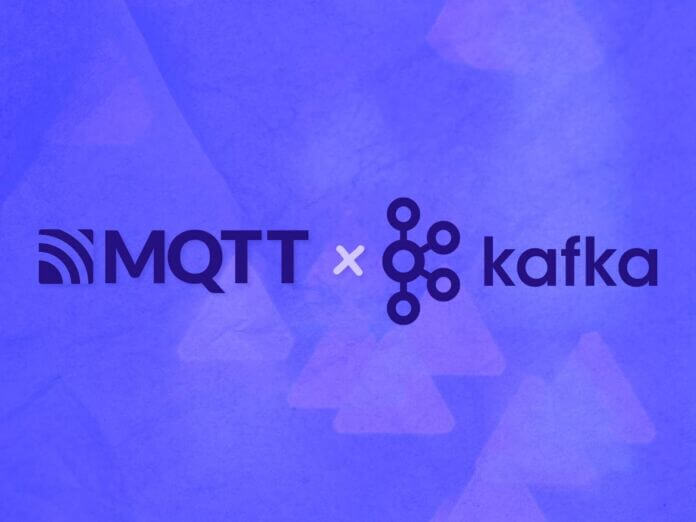
How Is MQTT Used with Kafka?
MQTT (Message Queuing Telemetry Transport) is a lightweight messaging protocol for efficient communication between devices in constrained networks. Apache Kafka is a distributed streaming platform. It is designed to handle large-scale, real-time data streaming and processing.
Kafka and MQTT are complementary technologies that enable end-to-end integration of IoT data. By integrating Kafka and MQTT, businesses can establish a robust IoT architecture that guarantees reliable connectivity and efficient data exchange between devices and IoT platforms. At the same time, it also facilitates high throughput real-time data processing and analysis throughout the entire IoT system.
There are many IoT use cases where integrating MQTT and Kafka provides significant value, such as Connected Cars and Telematics, Smart City Infrastructure, Industrial IoT Monitoring, Logistics Management, etc. In this blog post, we will explore the seamless integration of MQTT data with Kafka for the IoT Application.
Which IoT Challenges Can Kafka and MQTT Address?
When designing an IoT platform architecture, several challenges arise that need to be addressed:
- Connectivity and network resilience: Critical IoT scenarios, such as Connected Cars, rely on network connectivity to transmit data to the platform. The architecture should be designed to handle intermittent connectivity, network latency, and varying network conditions.
- Scaling: As the number of devices increases, the architecture must be scalable to handle the growing volume of data generated by IoT devices.
- Message Throughput: IoT devices generate a vast amount of data in real time, including sensor readings, location information, and so on. The platform architecture must be capable of handling high message throughput to ensure that all data is efficiently collected, processed, and delivered to the appropriate components.
- Data storage: IoT devices generate a continuous stream of data, which needs to be stored and managed effectively.
The Need to Integrate MQTT with Kafka in an IoT Architecture
While Kafka excels in its role as a reliable streaming data processing platform for facilitating data sharing between enterprise systems, certain limitations make it less ideal for IoT use cases:
- Client complexity and resource intensiveness: Kafka clients are known for their complexity and resource requirements. This poses difficulties for smaller IoT devices with constrained resources, as running a Kafka client on such devices may be impractical or inefficient.
- Topic scalability: Kafka has limitations in handling a large number of topics. This can be problematic for IoV deployments with extensive topic definition, as they may not seamlessly fit into Kafka’s architecture, especially in scenarios involving a significant number of devices and multiple topics in each device.
- Unreliable connectivity: Kafka clients require a stable IP connection, which proves challenging for IoT devices operating over unreliable mobile networks. These networks can introduce intermittent connectivity issues, disrupting the consistent communication required by Kafka.
Integrating MQTT with Kafka can help address most of the limitations of Kafka in IoT device connectivity scenarios:
- Direct addressing: MQTT supports load balancing, enabling IoT devices to connect to Kafka brokers indirectly through load balancers.
- Topic scalability: MQTT is well-suited for handling many topics, making it an ideal candidate for IoT platform deployments with extensive topic design.
- Reliable connectivity: MQTT is designed to operate over unreliable networks, making it a reliable messaging protocol for IoT devices and connections.
- Lightweight client: MQTT clients are designed to be lightweight, making them more suitable for resource-constrained IoV devices.
Comparison of Viable MQTT-Kafka Integration Solutions
When integrating MQTT and Kafka in an IoT platform, several viable solutions are available. Each solution offers its own advantages and considerations. Let’s explore some of the popular MQTT + Kafka integration options:
EMQX Kafka Data Integration
EMQX is a popular MQTT broker that offers seamless integration with Kafka through its Kafka Data Integration feature. As a bridge between MQTT and Kafka, EMQX enables smooth communication between the two protocols.
This integration allows the creation of data bridges to Kafka in two roles: producer (sending messages to Kafka) and consumer (receiving messages from Kafka). EMQX allows users to establish data bridges in either of these roles. With its bi-directional data transmission capability, EMQX provides flexibility in architecture design. Additionally, it offers low latency and high throughput, ensuring efficient and reliable data-bridging operations.
Confluent MQTT Proxy
Confluent is the company behind Kafka. Its MQTT Proxy connects MQTT clients and Kafka brokers, allowing them to publish and subscribe to Kafka topics. This solution simplifies the integration process by abstracting the complexities of direct communication with Kafka brokers.
Currently, this solution is limited to supporting MQTT version 3.1.1, and the performance of MQTT client connections may influence the throughput.
Custom Development with Open-Source MQTT Broker and Kafka
With the use of an open-source MQTT Broker, users have the flexibility to develop their own bridge service that connects MQTT and Kafka. This bridge service can be built using an MQTT client to subscribe to data from the MQTT Broker and utilize the Kafka producer API to publish the data into Kafka.
This solution requires development and maintenance efforts, as well as significant work to ensure reliability and scalability.
Conclusion
The MQTT + Kafka architecture is well-suited for use cases that require real-time data collecting, scalability, reliability, and integration capabilities in IoT. It enables a seamless flow of data, efficient communication, and innovative use cases such as applications and services for the connected vehicle ecosystem. Hence, the combination of MQTT and Kafka is an ideal solution for seamless end-to-end integration of IoT architectures, spanning from the IoT device to the cloud and ensuring bi-directional communication.
Tweet
Share
Share
- MQTT
- Network and Protocols
- MQTT
- Network and Protocols
